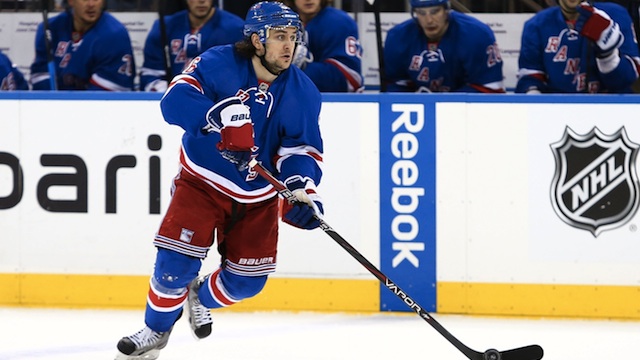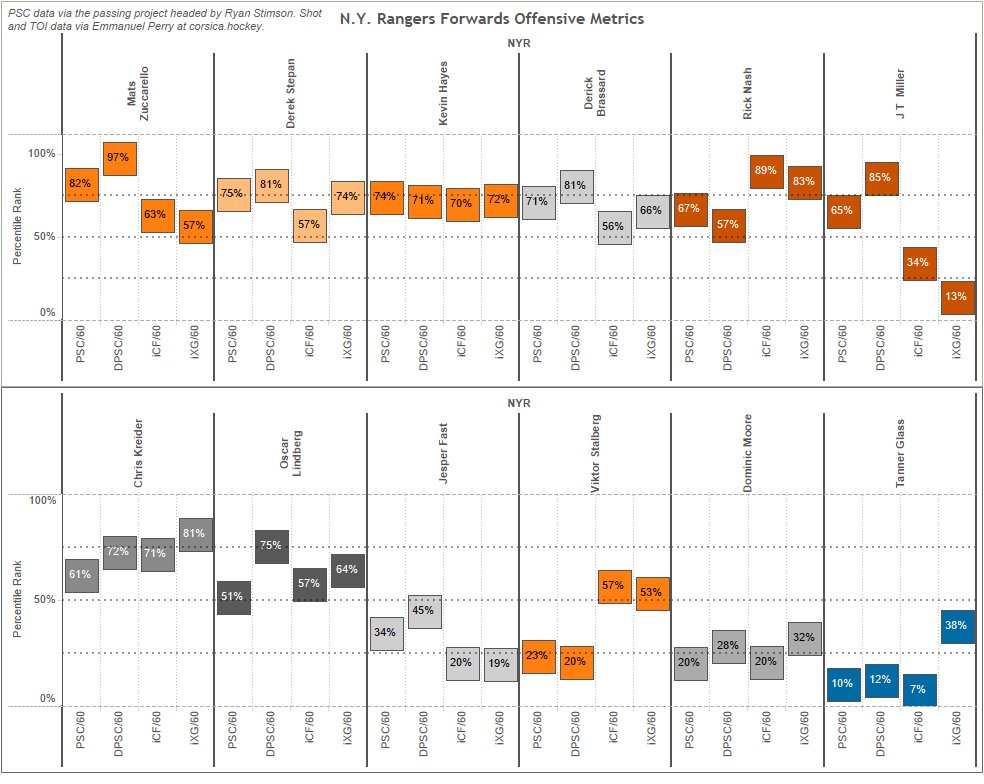Generating offense can be tricky to analyze. Most use raw point totals, but those don’t tell the entire story sometimes. What point totals can miss is overall creation of offense and quality chances. Only 8.5% of team chances wind up in the back of the net on average (assuming a .915 SV% as league average), and that’s in all situations. Are we only supposed to judge offense on 8.5% of all hockey plays?
That’s where some of the passing projects come into play. The main one is Ryan Stimson’s (@RK_Stimp) passing project, where he employs many different people to manually track pass types and how they lead to goals. This got taken one step further by @loserpoints, who looked at specific pass types (Steve Valiquette’s Royal Road passes, behind the net passes, etc) and how they led to dangerous shot attempts. The full details are here.
To sum it up quickly, when a pass that he measured winds up as a shot on goal, a Royal Road pass has the highest conversion rate at just over 27%. That means when there is a Royal Road pass that is completed and winds up on net, there is a 27% chance it winds up in the net. Passes from behind the net have the next highest conversion rate at just over 12%. Faceoff and point shots convert at less than 5%.
The shot success rates shouldn’t really surprise many people. Getting the goalie to move means a higher success rate. So logically the next step is identifying the players that are the best at generating these types of chances, called Dangerous Primary Shot Contributions (DPSC). The higher the number, the better the player is at setting up his teammates for high quality chances on net.
Naturally the Sedins are the best at this. But you know who #11 is on this list? Mats Zuccarello. This stat measures primary assists (first assists) that directly set up a teammate for a high quality chance. Zucc is better than 97% of the league in this regard. That’s absurd. Here’s how the rest of the Rangers measure:
For the sake of this post, let’s focus on the DPSC/60 numbers (remember that per-60 minutes of play numbers are better evaluators, refresher post here), which for each player here is the second box. There are some other measures here, but in regards to the Rangers that are the best at setting up these high quality chances, Zuccarello is head and shoulders above the rest. Funny enough, Rick Nash is significantly lower than I thought he’d be, at the 57% percentile (the percentages represent percentiles).
Of players that saw regular top-nine minutes, only Jesper Fast comes it at below the 50% percentile. With Nash at the 57th percentile, the next lowest was Kevin Hayes at the 71st percentile. So that means that eight of the Rangers top-nine forwards are better than half the league at setting up their opponents for high quality chances, and seven of them are better than 70% of the league.
To me –and this is just my opinion of how to read this– the stat primarily measures a combination of vision, hockey IQ, and passing. The higher the percentile rank, the better the player is at putting all three of these skills together to get an on-ice product that betters the team. It’s not perfect, as usage, teammates, and competition may have some effect here, but it does a great job of measuring the above three skills.
The Rangers have a very enviable group of forwards. Their depth at the position is solid, with a great number of players that possess true smarts and vision that have the hands to go with them. A healthy Rick Nash, and Pavel Buchnevich and Mika Zibanejad coming in as potential finishers, the forward group could be one of the most potent in the league.
Share:
More About:Analysis


